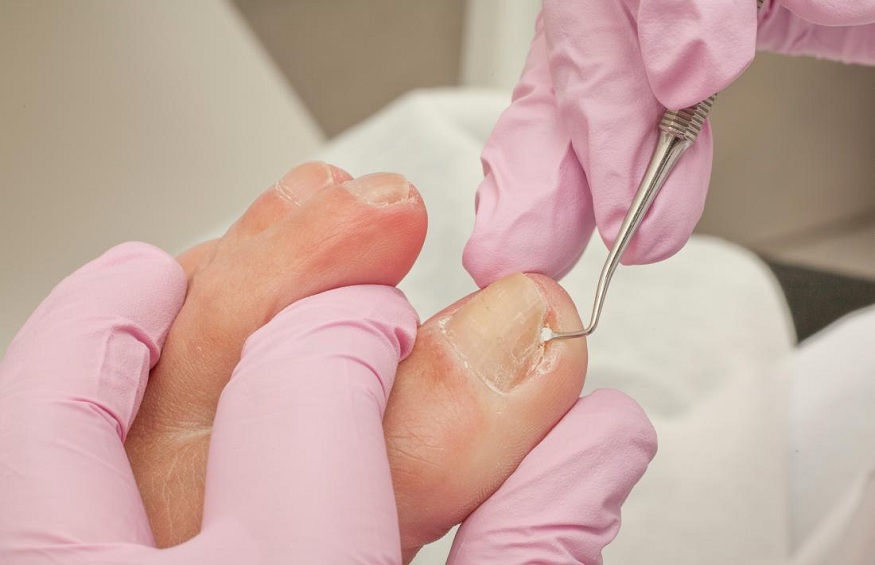Your doctor can diagnose and treat an ingrown toenail based on your symptoms and a physical examination of the nail and surrounding skin.
Treatment
If home cures do not alleviate your ingrown toenail, your doctor may recommend the following:
- Raising the nail. For a minor ingrown nail, your doctor may delicately raise the ingrown nail edge and place cotton, dental floss, or a splint beneath it. This isolates the nail from the skin above it, allowing the nail to grow above the skin’s border in 2 to 12 weeks. You must soak the toe and replace the dressing each day at home. After soaking, your doctor may additionally prescribe a corticosteroid cream for application.
- Another method, which reduces the replacement frequency, uses cotton impregnated with a solution that binds it in place and renders it waterproof (collodion).
- Applying tape on the nail. Your healthcare practitioner will peel the skin away from the ingrown nail using tape.
- Placing a nail splint beneath the nail. Using this technique, your healthcare professional anaesthetizes the toe and inserts a thin slit tube beneath the embedded nail. This splint will remain in place until the nail has grown beyond the edge of the skin. This procedure also alleviates the pain of an ingrown nail.
- Removing a portion of the nail. Your healthcare provider may anaesthetize the toe and trim or remove the ingrown section of the nail if the ingrown toenail is severe (skin inflammation, discomfort, pus). It may take two to four months for your toenail to regrow.
- Extraction of the nail and tissue. If the condition occurs regularly on the same toe, your doctor may recommend removing a piece of the nail and the underlying tissue (nail bed). This technique may prevent the nail from regrowing that portion. Your healthcare professional will anaesthetize the toe before employing a chemical, laser, or other procedure.
As needed, you may take pain medication following surgery to remove your nails. It may be beneficial to apply a moist compress for a few minutes per day for a few days until the swelling subsides. Then, rest the toe and elevate it for 12 to 24 hours. When you resume normal activity, avoid activities that may irritate your toe, and do not swim or use a hot tub until your doctor permits you to do so. It is permissible to shower the day following surgery. Contact your physician if the toe is not healed.
Sometimes, even after a successful operation, the problem returns. Surgical treatments are superior to nonsurgical approaches for preventing recurrence.

